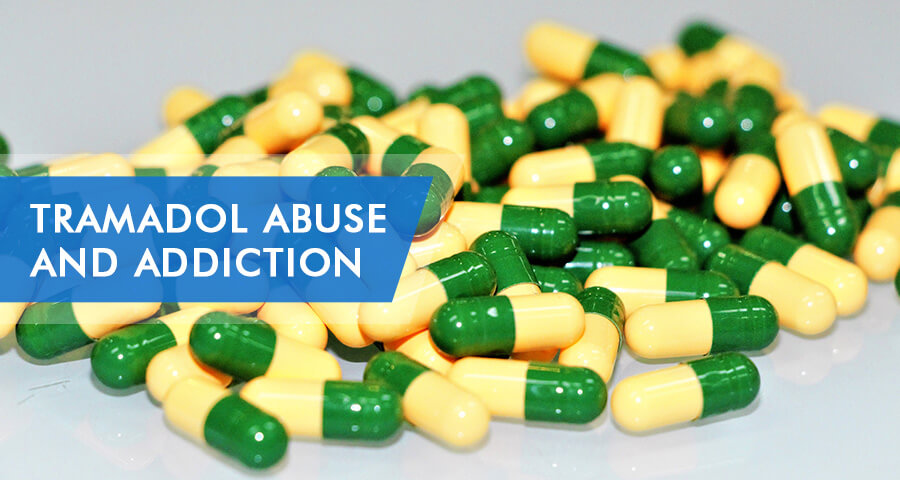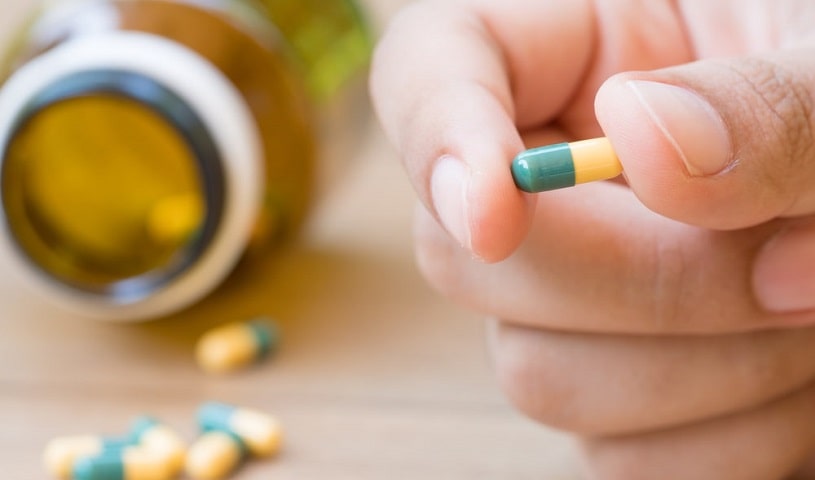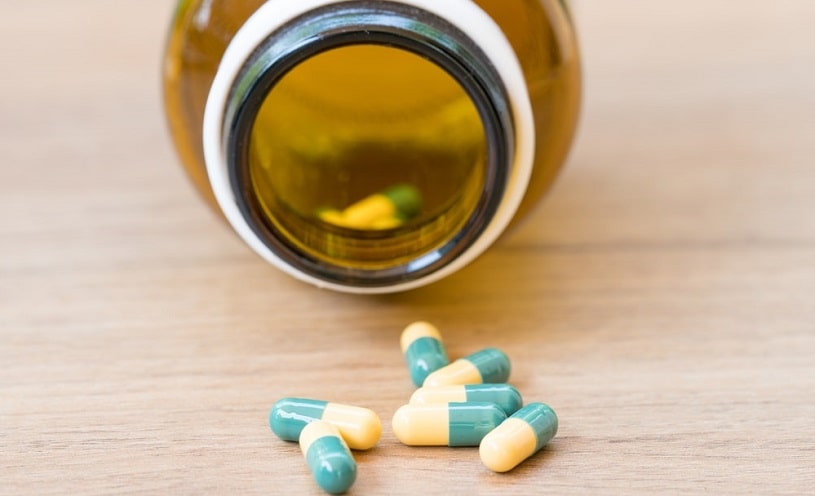
Tramadol medication (brand name Ultram) is an opioid painkiller, similar to other drugs like Oxycodone and Hydrocodone, which is used in the treatment of chronic pain. Like all opioids, it can be abused, and Tramadol addiction is possible. In some cases, even those who use the treatment as prescribed by their doctor will develop a tolerance to the drug. When that occurs, more and more of the substance is needed to achieve the same results.
Table Of Contents:
Addicts may also suffer from withdrawal symptoms if the medication is discontinued. These symptoms may include depression, flu-like symptoms, or irritability, and mood imbalances.
What Is Tramadol?
One of the essential Tramadol uses is managing moderate pain, ranging from surgery to conditions like fibromyalgia. It decreases pain by binding to opioid receptors in the brain, similar to other pain medications, like Oxycodone, Hydrocodone, or Morphine. Despite being milder than many other opioids, the Tramadol classification is a Schedule IV substance, which can lead to abuse and addiction.
Taking it as prescribed carries a risk for abuse, but with recreational use, the possibility is even higher. Consuming Tramadol with alcohol or other drugs poses risk to a user’s health. Such practice or taking large amounts of the drug can lead to Ultram overdose.
All in all, consuming the medicine for recreational purposes is not only dangerous but also a criminal offense.
More About Opioids:
The medication is generally considered “weaker” than other opioids. Comparing Tramadol and Oxycodone, or morphine, Ultram is less potent. Higher doses of the drug are required to achieve the same analgesia level provided by the more potent opioids. However, this does not mean that a Tramadol addiction or opioid dependence is less likely to occur when compared to more potent opioids like morphine.
Those who have severe pain may take more than recommended in an attempt to treat their conditions. Although it is often prescribed versus other pain medications with higher addiction risk, the substance is still dangerous to health when abused. Patients should never use it in a way contrary to a doctor’s recommendations.
What Is Tramadol Used For?
The FDA approves the drug for the treatment of moderate to moderately severe chronic pain in adults such as back pain, fibromyalgia, and so on, which is the most well-known of the Tramadol uses. The drug itself has no activity on opioid receptors but instead works through the actions of one of its major metabolites O-desmethylTramadol. This activity at opioid receptors is the primary mechanism behind the analgesic properties of the medication. The parent drug also inhibits the reuptake of norepinephrine and serotonin, contributing to its analgesic properties.
Tramadol for Anxiety
Chronic pain is usually associated with various indirect consequences such as anxiety, depression, and a general reduction in life quality. The use of the substance in the treatment of chronic pain has shown promise as being effective in treating pain and the associated adverse psychological effects such as anxiety. It is important to note that the FDA does not approve the opioid as an anxiolytic, which is one of the off-label Tramadol uses.

Tramadol for Depression
This is another one of the off-label Tramadol uses. One primary mechanism through which the narcotic works is by the inhibition of serotonin and norepinephrine reuptake. This property is related to the effects of certain antidepressants such as mirtazapine, duloxetine, and venlafaxine. Therefore Ultram has found some off-label use as an antidepressant, especially in the treatment of depression caused by or associated with chronic pain.
Tramadol Drug Class and Schedule
The Tramadol drug class is known as opioid narcotics. Other members within the Tramadol drug class include opioids such as morphine, pentazocine, fentanyl, and so on. In 2014 the drug was classified as a schedule IV drug under the Controlled Substance Act by the FDA due to its high potential for dependence and addiction.
Is Tramadol Addictive?
Many people have asked the question, “Is Tramadol addictive?” due to the Tramadol classification as a weak opioid. Unfortunately, like virtually all opioid narcotics in the Tramadol drug class, the drug has a significant potential for substance abuse, even when taken at the prescription dose. However, following a certified health professional’s prescription reduces the risk of developing a potential Tramadol addiction, unlike abusing the drug, which has a high risk of possible substance abuse. Chronic use, either as part of a prescription or due to drug abuse, can lead to tolerance and eventually dependence.
Dependence on the drug may lead to unpleasant withdrawal symptoms when the drug has not been consumed for some time.
Abuse Statistics
In 2014, over 40 million prescriptions for the drug were written. According to the Drug Enforcement Administration, over 3.2 million U.S. citizens engaged in Tramadol medication abuse and misuse for non-medical purposes at some point in their life.
Medical prescriptions for the medicine increased 88 percent from 23.3 million in 2008 to 43.8 million in 2013, with emergency room visits involving the opioid increasing about 250 percent from 6,255 visits in 2005 to 21,649 in 2011.
Spotting an Opioid Addiction Problem
Substance abuse may not be plain to see. Often, a person who is abusing drugs tries to conceal the fact and inadvertently leads others to the suspicion of drug use. There are certain signs one may notice if the loved one has a problem.
Those With a Tramadol Addiction May Exhibit:
- Drowsiness
- Nausea or vomiting
- Slurred speech and lack of coordination
- Pinpoint pupils
- Headaches
- Sudden or unexplained seizures
Aside from the physical signs that may suggest a Tramadol addiction, there are certain important behavioral signs that may be suggestive of Tramadol addiction.
They Include:
- Craving for the substance when not under its influence
- Tolerance to the medication
- Taking the drug for recreational use
- Inability to stop using the medicine
- Continued intake, despite adverse effects
- Failing performance at school or work
- Reclusive behavior
If someone notices any of these symptoms in themselves or a loved one, seek medical attention. Because the medication is a milder opioid, symptoms may not become immediately apparent. By the time they are picked up on, tolerance has often already occurred.
Opioid Addiction Treatment
The process of overcoming Tramadol addiction in a professional setting involves three stages: detox, rehab, and aftercare. Detoxification involves the removal of the opioid from the body, which can include flu-like symptoms. After detoxing, the user will need to address the psychological addiction with therapy. Aftercare involves maintaining one’s sobriety.
Detox Stage
The first phase of recovery is to remove all traces of Ultram from the body. Most people start experiencing the first symptoms of opioid withdrawal within the first two days after taking medicine’s last dose.

Luckily, compared to other drugs, withdrawal symptoms from Ultram are not as drastic. The entire detoxification process typically lasts only one week. In severe addiction cases, it can last two weeks. But most people restore their chemical balance between seven and ten days.
Even though Ultram withdrawal is not extremely painful, the individual has the choice to go through that phase in a qualified detox center. The detoxification process and withdrawal symptoms are under the supervision of medical staff at a qualified center.
Doctors often recommend gradually taper off the dose of the opioid rather than the “cold turkey” method of quitting. As a result, the withdrawal effects are less intense.
Rehabilitation Phase
After a user is free from their physical dependence on the substance, it is time for the next step: tackling the psychological addiction to the opioid. The recovery period takes at least one month but can take several months if the patient needs it.
Each rehabilitation center has its recovery program. But it always includes a combination of individual counseling and group meetings.
The Following Therapeutic Methods Are Examples of Possible Treatments One May Encounter During Rehab:
- Cognitive-behavioral therapy (CBT)
- Dialectical behavior therapy (DBT)
- Motivational enhancement therapy (MET)
- Holistic therapy
- Biofeedback therapy
- Art therapy (usually with music, dancing, painting, or sculpting)
- Equine and Pet Therapies
- Yoga
- Mindfulness
- Meditation
- The 12-step program
- The SMART method
- Various support groups
That is the critical stage of the recovery, where one will learn how to cope with the needs and avoid triggers and relapses.
Aftercare and Recovery
After the rehab phase, the patients return to everyday life, and it’s up to them to continue the recovery work. This is the time when they implement what they learned during rehab. Staying sober and functioning well without the opioid are their two main goals now.

But don’t worry if that sounds overwhelming: there is no need to do it alone. Most ex-addicts that have successfully recovered continue one-on-one counseling. Many of them say that attending support groups is the most helpful because they regularly meet with other recovering addicts. It is a safe place to exchange, grow together and help each other. One can find different support groups in various locations. But almost every town has a local Narcotics Anonymous group, where attendance is usually free.
Recovering From Addiction
Ultram is an opioid narcotic with significant potential to cause dependence and addiction. A Tramadol addiction has substantial adverse health effects, which is why you should seek professional help immediately. Abrupt cessation may also be accompanied by withdrawal symptoms such as nausea, anxiety, depression, insomnia, and hallucinations, which may significantly hinder your efforts of quitting the drug. This is why seeking professional help at a drug rehabilitation center is very important. They can provide you with the medical expertise, strict support, and coping techniques you need to help rid yourself of a Tramadol addiction and reduce your chances of relapsing.
Frequently Asked Questions
Is Tramadol a Narcotic?
Yes, it is considered a narcotic because it belongs to the class of medications known as opioid narcotics, which are known to produce similar effects through their action on specific receptors within the brain known as opioid receptors. Narcotics are also well-known for their tendency to cause dependence and eventually addiction, a property that is also shared by the drug.
Is Tramadol an NSAID?
No, it does not belong to the class of analgesics known as nonsteroidal anti-inflammatory drugs (NSAIDs). NSAIDs work by inhibiting an enzyme known as cyclooxygenase, which produces various inflammatory and pain mediators. The medication works through the action of opioid receptors located in the brain.
Does Tramadol Help with Opiate Withdrawals?
The medication is considered a “weak” opioid compared with other opioids such as morphine and fentanyl. Therefore there is increasing evidence of the efficacy of the opioid when used as a treatment for the withdrawal symptoms associated with dependence on more potent opioid narcotics such as those mentioned above.
Does Tramadol Have Tylenol in It?
The opioid does not contain Tylenol (the brand name of acetaminophen, an analgesic used to treat mild to moderate pain). However, several Tramadol and acetaminophen combinations are available. Both painkillers work through different mechanisms of action and therefore are more effective with dealing with pain when used together.
Hope Without Commitment
Find the best treatment options. Call our free and confidential helpline
Most private insurances accepted
Find Drug Rehabilitation Centers Near You Anywhere In the US
Addiction Resource team has compiled an extensive list of the top drug rehabilitation facilities around the country. Use our locator tool to find the best centers near you.
Page Sources
- El-Safty I., Eltamany E., Shouman A., El-Gamel O., Nada A., Ali W. Effect of Tramadol addiction alone and its co-abuse with cannabis on urinary excretion of Copper, Zinc, and Calcium among Egyptian addicts. African Health Sciences. 2018; 18(3): 767–775. doi:10.4314/ahs.v18i3.35. https://www.ncbi.nlm.nih.gov/pmc/articles/PMC6307004/
- Medline Plus. Tramadol. 2019. https://medlineplus.gov/druginfo/meds/a695011.html
- Drug Enforcement Administration. Tramadol(Trade Names: Ultram®, Ultracet®). 2018. https://www.deadiversion.usdoj.gov/drug_chem_info/Tramadol.pdf
- "Weak" opioid analgesics. Codeine, dihydrocodeine and Tramadol: no less risky than morphine. (2016). Prescrire international, 25(168), 45–50. https://pubmed.ncbi.nlm.nih.gov/27042732/
- Caspani, O., Reitz, M. C., Ceci, A., Kremer, A., & Treede, R. D. (2014). Tramadol reduces anxiety-related and depression-associated behaviors presumably induced by pain in the chronic constriction injury model of neuropathic pain in rats. Pharmacology, biochemistry, and behavior, 124, 290–296. https://pubmed.ncbi.nlm.nih.gov/24974768/
- Barber J. (2011). Examining the use of Tramadol hydrochloride as an antidepressant. Experimental and clinical psychopharmacology, 19(2), 123–130. https://pubmed.ncbi.nlm.nih.gov/21463069/
- Zarghami, M., Masoum, B., & Shiran, M. R. (2012). Tramadol versus methadone for treatment of opiate withdrawal: a double-blind, randomized, clinical trial. Journal of addictive diseases, 31(2), 112–117. https://pubmed.ncbi.nlm.nih.gov/22540433/
- Substance Abuse and Mental Health Services Administration. Emergency Department Visits For Drug Misuse Or Abuse Involving the Pain Medication Tramadol, 2015. https://www.samhsa.gov/data/sites/default/files/report_1966/ShortReport-1966.pdf


 Reviewed by:
Reviewed by:  Written by:
Written by: 


 FindTreatment.gov
FindTreatment.gov